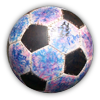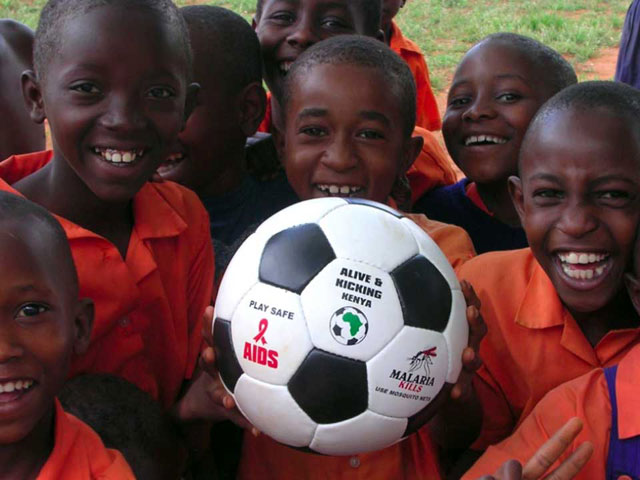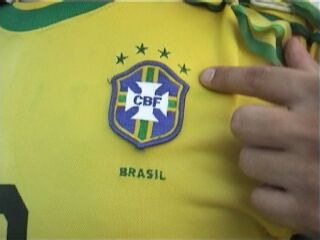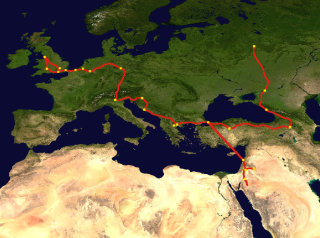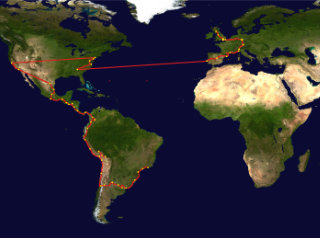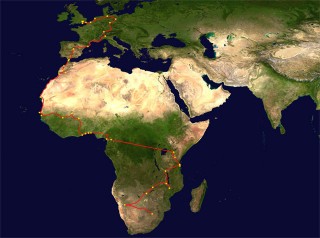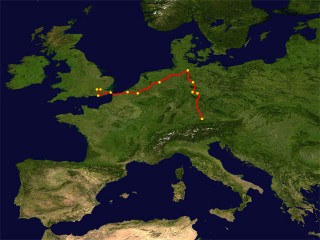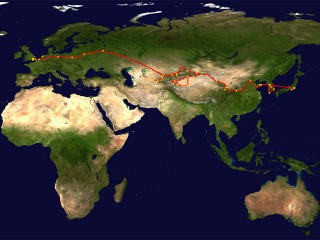Special Olympics just posted a story on their website, the main gist of which I’ve quoted here:
I had resigned myself to the fact that my son would never prosper in anything but seeing him participating in the young athlete activities I realised that he had a talent in sports and now I have hope that my son will prosper in something; sports. The happiness I saw in my son’s face on that day cannot be equalled to anything, by the time we were going back home all he wanted to acquire was a ball, he kept on asking me if I will by him a ball on our way home.
This had me on the verge of tears this morning — not tears of sadness, but of joy and anticipation. If this is a foretaste of what’s to come on The Ball’s journey to South Africa, then I can’t wait to get going. I’m really looking forward to the many ways in which The Ball can contribute to the great work that Special Olympics are doing.
In the meantime, if you want to contribute towards this boy’s dream of acquiring a ball (or at least acquiring access to one, which is in many ways more important than ownership) then please visit our JustGiving page and make a donation to Alive & Kicking, who will deliver footballs to our partners (including Special Olympics projects) in Africa. Or, if you prefer, you can go to Special Olympics’ donations page and support them directly.
I guess this is the blogging equivalent of a retweet, but I think this is a great story by 17-year-old Thandile Ntlebi, who lives in Township Khayelitsha, South Africa about how the children made their DIY footballs:
Firstly you look for old clothes or blankets. Then you put a few condoms around, which you blow up with your mouth, but not with too much air. Just so it’s the same size as a soccer ball. After this you put either a plastic bag or a piece of old clothing over the condom. Then to make it strong, you tear up the old clothing or blanket into long strips and tie the strips all around the condom to strengthen the shape of the ball and make it heavier. Once you can feel it bounces well, you take a strong plastic bag and wrap it around the ball. Lastly you reinforce it by wrapping strong rope or tire wire around it.
Read the whole post on the wonderful AfriGadget blog.
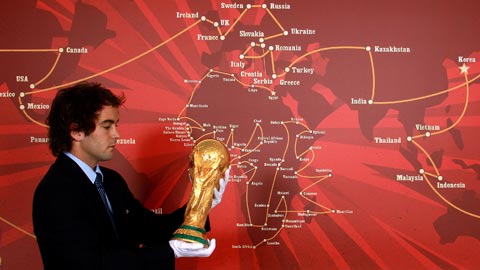 The Cup goes on tour
The Cup goes on tourCoca Cola and FIFA have announced details of their World Cup trophy tour:
[The trophy] will begin its journey from the FIFA Headquarters on September 21, 2009, will travel around the world before arriving in the host country of South Africa on May 4, 2010. The total distance the tour will travel is 134,017 kilometers (83,274 miles) or more than three times the circumference of Earth.
Source: the press release
You get to see the trophy if you take part in Coca-Cola promotions in countries en route.
This has been a great week for The Ball. The big news is that we’ve signed a Memorandum of Understanding with Special Olympics. Special Olympics are going to be organising Unified Football festivals for The Ball to visit as it makes its way to South Africa. The Ball, in turn, will be supporting the great work that Special Olympics is doing “to use football as a tool to unite individuals, with and without intellectual disabilities, in the spirit of the game, creating communities of tolerance and inclusion across the world.” This is what we think The Ball stands for too and we’re really looking forward to working together.
Unfortunately you can’t — unless you already have a ticket:
The second phase of ticket sales for the opening match, semi-finals and the final of the 2010 Fifa World Cup has been sold out.
Fifa said on Thursday the second phase had seen 105 322 tickets confirmed and approved so far.
“Due to a high demand for certain team-specific ticket series, these tickets are no longer available for the following countries: England, Brazil, Argentina, Australia, Ireland and Netherlands,” it said.
Source: IOL
Oh well.
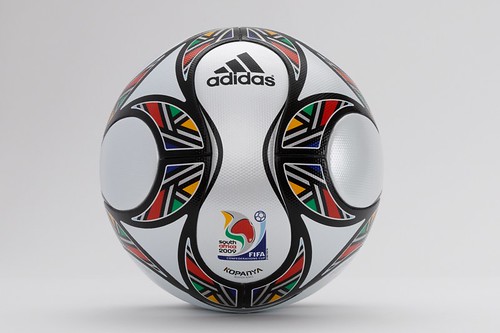
The Kopanya ball on Flickr
From the Cape Argus:
The ball, manufactured by adidas, will be used exclusively in World Cup matches and is expected to be unveiled at Fifa’s final draw in Cape Town in December, Gavin Cowley, managing director of Adidas SA, has revealed.
Speaking during the bi-weekly 2010 lecture series in Green Point last night, Cowley said the ball, like the Confederations Cup soccer ball, had a name, but that it would be kept a secret for now.
“Like the Kopanya soccer ball, which we manufactured for the Confederations Cup this year, the World Cup official soccer ball will also have a name and will be truly South African in colour and design,” said Cowley.
“We are very excited and I wish I could tell all South Africans what design and colours we have selected for the World Cup soccer ball.
“Many might think it’s ridiculous, but the ball is a very important component of the beautiful game – without it there is no soccer.”
Well, we couldn’t agree more with that.
Oddly, however, the Argus also quotes the man from adidas as saying:
In December, when the official World Cup soccer ball is unveiled, over 700 000 million people will be watching.
My, that’s a lot of folks!
Source: IOL
A while back, I wrote a post about IFAB, commenting on the curious lack of transparency in that organisation. Well, it’s that time of year when they meet again. Today, FIFA published the agenda for the 2009 AGM of the IFAB. As ever, they’re going to be slumming it…
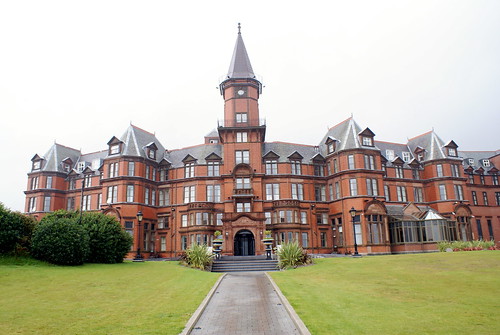
“Slieve Donard Hotel” by Vironevaeh on Flickr
Some of the more contentious items on the agenda:
The location of the dressing rooms in certain stadiums around the world is such that the walk from and back to the field of play can take players and match officials much of the current 15-minute half-time interval. It is therefore proposed that the maximum duration of the half-time interval be increased to 20 minutes.
So that’s it — nothing to do with advertising then. Phew.
The Irish FA would wish to gauge the opinion of the International Football Association Board on the possibility of using ‘Sin Bins’ for players guilty of breaches of the Laws of the Game, currently resulting in the administration of a yellow card.
Interesting. Not a proposal, but up for discussion. Hopefully FIFA will publish minutes this year so we can see what went on. We’ll see.
We’re very proud to announce that The Ball for 2010 will be made by Alive & Kicking in South Africa. This amazing project makes cheap, tough, repairable footballs, netballs and volleyballs, using African skills and African leather. Each carries a message about HIV/AIDS and malaria.
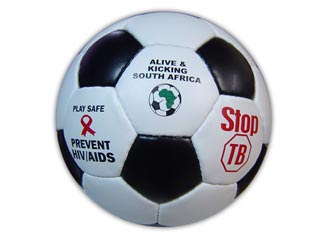
The Ball 2010 will be “an African ball made for the poorest African communities – the very embodiment of development through football in Africa.” says James Flecker of Alive & Kicking.

Barack Obama inspecting an Alive & Kicking ball in Kenya
Please visit Alive & Kicking’s donations page where you can donate an ball to a community that will appreciate it more than you can imagine.
Winners of the World Cup can now display a badge as well as stars on the national shirt.

The ‘FIFA World Champions Badge’ on the Italian shirt
In fact, it looks like the Italian FA has incorporated the stars into their badge design — previously the stars would circle the national FA’s badge, with a new one added for each World Cup won.
Why is this relevant to us? Well, at one point we thought that The Ball could represent the star that gets awarded at the end of the competition. That’s why the 2002 and 2006 films start with The Ball emerging from the heavens, descending to its starting point in Battersea Park like a shooting star coming down to earth. In a sense, the star on the shirt is a memory of that year’s Ball and the games played with it.
Keeping you up to date on official balls…
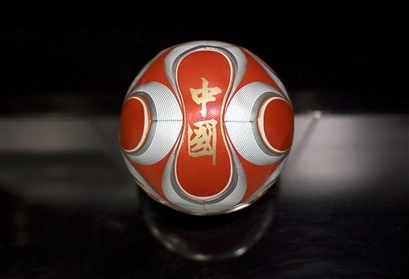
A soccer ball identical to the balls to be used in Olympic soccer competition is seen in an Adidas store in Beijing Tuesday July 29, 2008. The ball, called Adidas Magnus Moenia, or Great Wall Star, and featuring the Chinese characters for “China” was specially designed for the Beijing 2008 Olympic Games.
